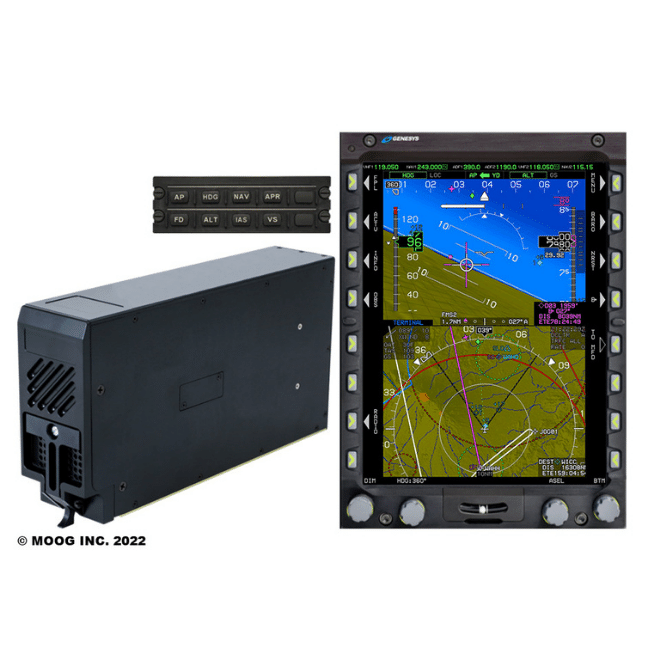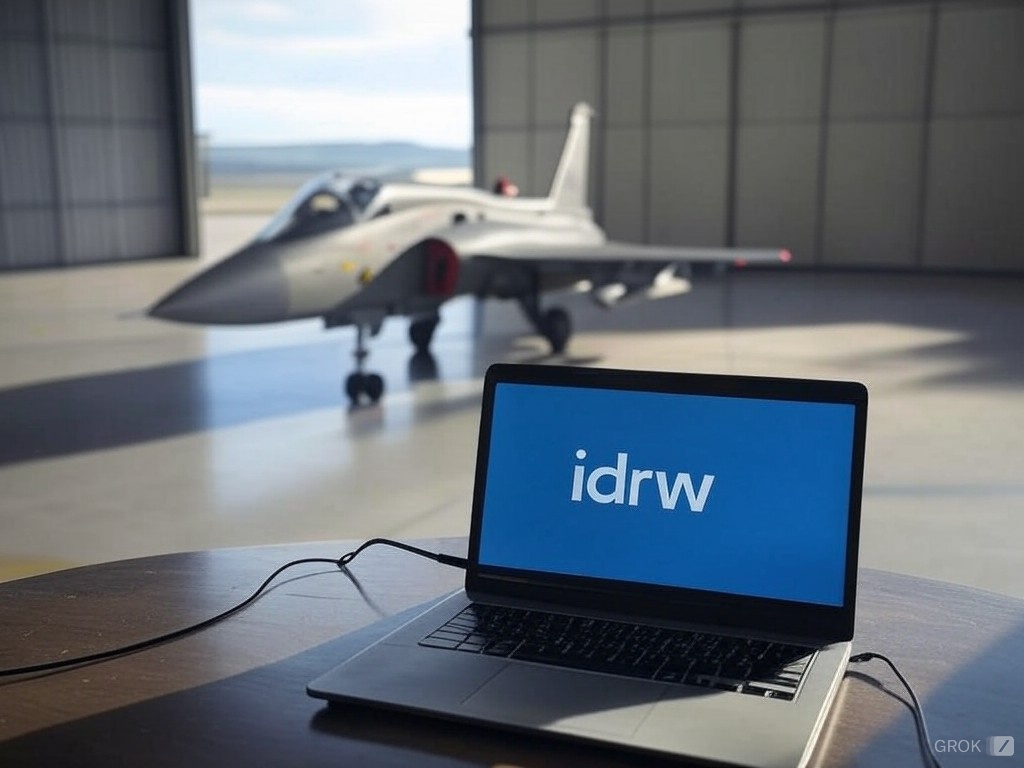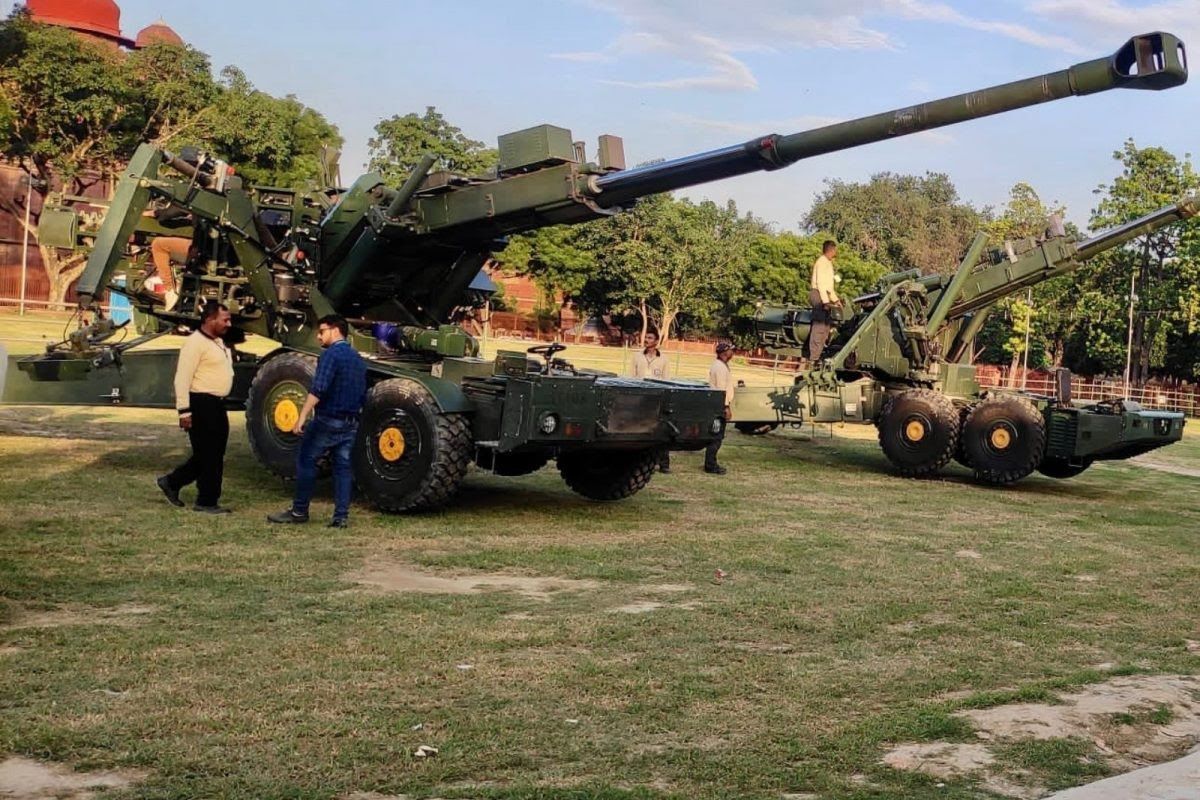SOURCE: IDRW.ORG.


At MAPCON 2024, Megha Engineering and Infrastructures Ltd (MEIL) has taken a significant leap forward in India’s defense capabilities by showcasing their innovative Very Short-Range Air Defence System (VSHORAD). This system, mounted on a lightweight and versatile tripod, is designed as a man-portable air defense system (MANPAD) to counter low-altitude aerial threats effectively.
The VSHORAD system presented by MEIL is a fourth-generation missile with an impressive operational range of up to 6 kilometers. Its design philosophy centers around mobility, speed of deployment, and effectiveness, particularly in challenging terrains like mountainous regions. Here are some of the key features that set this system apart:
Continue readingSOURCE: AFI


The upcoming Aero India 2025 is set to showcase a detailed scale model of the Tejas MK2, revealing significant enhancements and armament configurations that underscore India’s progress in indigenous aerospace technology. The model, which provides a preview of the aircraft’s capabilities, features an array of advanced weaponry and systems tailored for modern combat scenarios.
The Tejas MK2, designed by the Aeronautical Development Agency (ADA) and manufactured by Hindustan Aeronautics Limited (HAL), will feature 11 hardpoints, allowing for a versatile loadout.
Continue readingSOURCE: AFI


In the early 1990s, amidst the geopolitical tensions of the Cold War’s aftermath, India and Russia embarked on an ambitious joint project to develop an air-to-air missile capable of neutralizing high-value airborne targets like AWACS (Airborne Warning and Control System) aircraft. This missile, known as the K-100, had the potential to significantly enhance the Indian Air Force’s (IAF) combat capabilities, particularly when integrated with the Su-30MKI Flanker aircraft. Here’s a look into what transpired with this project.
The K-100, also known by various names such as Izdeliye 172, AAM-L, KS-172, among others, was a project spearheaded by Russia’s NPO Novator and India’s Defence Research and Development Organisation (DRDO). The primary aim was to create an “AWACS killer” missile with an impressive range of 300 to 400 kilometers, which would have been a game-changer in aerial combat dynamics by allowing fighters to engage high-altitude, radar-equipped aircraft from well beyond standard engagement distances.
Continue readingSOURCE: AFI


In a significant revelation in the realm of international business ethics, the United States Department of Justice has reported that the US-based research and design firm, Moog Inc., engaged in bribery to secure contracts with India’s state-owned aerospace and defense company, Hindustan Aeronautics Limited (HAL). According to the orders issued on October 11, 2024, by the Securities and Exchange Commission (SEC), Moog Inc., through its Indian subsidiary Moog Motion Controls Private Limited (MMCPL), orchestrated payments to HAL officials.
The SEC’s detailed investigation into the matter uncovered that in April 2021, HAL had announced a public tender for aerospace actuators, valued at over $1.3 million. Following this announcement, by May 2021, MMCPL employees were actively discussing the logistics of bribing an HAL official. Internal communications revealed a plan to pay a 2.5% commission, with considerations for immediate and staggered payments to ensure the disqualification of other bidders. “By any means, we must take the order of HAL,” was a sentiment echoed among the employees, highlighting the desperation to win the tender.
Continue readingSOURCE: AFI


Meghalaya’s Director General of Police, Idashisha Nongrang, has reported the detection of Bayraktar TB2 unmanned aerial vehicles (UAVs) near the towns of Sohra and Shella in the East Khasi Hills district, close to the India-Bangladesh border. This development has raised significant security concerns, especially given the current political turbulence in Bangladesh.
The UAV in question, identified by the transponder code TB2R1071, was reportedly launched from the Tejgaon Airbase in Bangladesh. The Bayraktar TB2, crafted by the Turkish company Baykar, is renowned for its dual-use capabilities, offering both surveillance and precision strike options. These drones have an operational range of 300 km and can fly for up to 27 hours, making them a formidable asset for reconnaissance and potential combat missions.
Continue readingSOURCE: AFI


A joint operation by the Indian Army and Assam Rifles, under the Spear Corps, has resulted in the recovery of a significant cache of weapons and a surprising piece of technology: a Starlink antenna. The operation, conducted based on specific intelligence, targeted hill and valley regions across several districts in Manipur, including Churachandpur, Chandel, Imphal East, and Kagpokpi.
The security forces coordinated closely with the Manipur Police and other agencies during the search. The recovered weaponry included a range of items, from sniper rifles and automatic weapons to pistols, country-made mortars, single-barrel rifles, grenades, ammunition, and other war-like stores.
Continue readingSOURCE: RAUNAK KUNDE / NEWS BEAT / IDRW.ORG


With the induction of the Tejas MkII fighter jets slated to begin from 2029-30 onwards, the Indian Air Force (IAF) has outlined plans to form a dedicated in-house team to manage feedback, requested changes, and upgrades for the aircraft. This move aims to reduce dependency on Hindustan Aeronautics Limited (HAL), the Original Equipment Manufacturer (OEM) for the Tejas MkII program, particularly for software-related updates and modifications.
According to IAF officials, the current practice involves routing all requests for system changes or software upgrades through HAL, often incurring significant developmental costs. The new in-house approach will streamline this process, allowing the IAF to implement updates more frequently and cost-effectively. This shift is expected to ensure the Tejas MkII fleet remains consistently updated, avoiding delays or gaps often associated with periodic overhauls.
Continue readingSOURCE: RAUNAK KUNDE / NEWS BEAT / IDRW.ORG


The Aeronautical Development Agency (ADA) is contemplating a shift from the 23mm twin-barrelled Gryazev-Shipunov GSh-23 cannon, currently outfitting the Tejas Mk1A and slated for the Tejas MkII, to a higher-calibre gun for the Advanced Medium Combat Aircraft (AMCA) program. The decision comes as the AMCA, with its projected maximum takeoff weight (MTOW) of approximately 27 tons, offers the capability to integrate a more powerful weapon system.
While ADA has not officially disclosed the replacement, sources indicate that two key options are under evaluation A four-barrelled 25mm Gatling-type cannon and a 30mm GSh-301 cannon, renowned for its reliability and firepower.
Continue readingSOURCE: RAUNAK KUNDE / NEWS BEAT / IDRW.ORG


Indian Navy Chief Admiral Dinesh Tripathi has confirmed that the ambitious Project-76 program is in its preliminary stages, focusing on the development of a new class of indigenous conventional diesel submarines. This project is poised to be a significant step forward in India’s journey toward self-reliance in submarine technology, incorporating advancements from previous programs like Project-75 and Project-75I.
Sources revealed to idrw.org that the design phase for Project 76 is already underway, with the final blueprint expected to be ready by 2028. Once the design is finalized, the project will seek approval from the Cabinet Committee on Security (CCS), which is anticipated around 2033-34, paving the way for construction to commence.
Continue readingSOURCE: AFI


As aerial warfare evolves, Beyond Visual Range Air-to-Air Missiles (BVRAAMs) are becoming critical for ensuring air superiority. While Russia has long been a pioneer in air-to-air missile technology, its current inventory of BVRAAMs, such as the R-77 (NATO: AA-12 Adder), is increasingly viewed as outdated in terms of range and accuracy compared to modern Western and Asian systems. This has opened a potential opportunity for India’s Astra Mk1 and MkII missiles to be integrated into Russian-origin platforms like the MiG-29 and Su-30 family, which are extensively operated worldwide.
The R-77, once a trailblazer, has fallen behind modern counterparts such as the American AIM-120D AMRAAM and European Meteor. With a range of approximately 80–110 km, it struggles to compete with newer designs offering extended ranges, better kinematics, and superior resistance to countermeasures.
Continue readingSOURCE: AFI


The Quadrilateral Security Dialogue, or QUAD, comprising the United States, Japan, Australia, and India, has been pivotal in shaping strategic dynamics in the Indo-Pacific region. Each member, except India, has integrated or is in the process of integrating the Lockheed Martin F-35 Lightning II into their military forces, raising questions about India’s exclusion from this particular technology transfer.
India has historically maintained a policy of strategic autonomy, which sometimes conflicts with deep military alliances or dependency on foreign technology. The Indian Air Force (IAF) and the defence establishment have been cautious about technologies that could bind India too closely to any one power, especially in terms of maintenance, upgrades, and operational control.
Continue readingSOURCE: AFI


In 2023, Poland continued to import a variety of arms and ammunition from India, with the total value of these imports reaching US$456.23 thousand, as per the data from the United Nations COMTRADE database. This import activity highlights a niche but significant aspect of the trade relationship between India and Poland, focusing on defense and security equipment.
These imports, though modest in scale, reflect a strategic alignment where Poland might be looking to diversify its defense suppliers, potentially as part of broader security policies or to foster international relations with India in the context of the EU and NATO frameworks.
Continue readingSOURCE: AFI


In the high-stakes environment of aerial dogfights, where every move can mean the difference between life and death, the act of surrender is as dramatic as it is rare. While there are no official written rules for surrendering during a dogfight, certain actions have been recognized over time as signals of capitulation.
One of the most surprising methods for a fighter pilot to signal surrender is by lowering their landing gear while still in flight. This action, visible to any pursuing enemy aircraft, serves as a universal sign of yielding, indicating to the adversary that the pilot wishes to stop fighting and be escorted to the nearest military airbase. This gesture, though not formally documented in military protocols, has been acknowledged in various conflicts as a plea for mercy, urging the opponent to cease hostilities.
Continue readingSOURCE: IDRW.ORG.


In an unexpected turn of events, Azerbaijan, through intermediaries in a Middle Eastern country, has discreetly approached India with queries about the potential sale of Indian-made weapons. This outreach comes after Azerbaijan’s Defence Ministry publicly criticized the quality of Indian arms sold to Armenia, alleging that these weapons have negligible impact on the military balance and that Azerbaijan could easily counter them, thereby questioning the reputation of India’s defense industry.
Azerbaijan’s remarks were in response to India’s military sales to Armenia, which included systems like the Pinaka Multi-Barrel Rocket Launchers (MBRLs) and other munitions, part of India’s push to expand its defense exports. The critique from Azerbaijan not only highlights the ongoing tensions in the South Caucasus but also underscores a shift in how regional powers perceive and react to each other’s military strategies.
Continue readingSOURCE: IDRW.ORG.


Gridbots, a leading innovator in autonomous robotic technology, has introduced its latest creation: the BRUTE All-Terrain Track-Based Robot. Designed for a variety of defense and industrial applications, BRUTE is an advanced autonomous robot equipped with multiple features to enhance surveillance, reconnaissance, and threat detection. This cutting-edge system promises to redefine operational capabilities across rugged terrains, offering real-time intelligence and data processing with a host of impressive features.
BRUTE is specifically engineered to autonomously traverse a wide range of challenging terrains, making it ideal for inspection, surveillance, and reconnaissance operations in both military and industrial environments. Whether deployed for border patrols, disaster management, or reconnaissance missions, BRUTE delivers continuous monitoring with an array of sophisticated sensors and features.
Continue reading